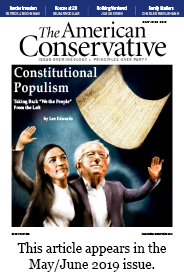Silence: A Thin Line Between Terror and Joy

Editor’s Note: As part of the TAC staff’s celebration of Western Easter weekend, we are resharing some thematically appropriate pieces from our archives.
“Does the silence scare you?” The novice master at the Abbey of Gethsemani in Kentucky posed this question to Thomas Merton, the Trappist monk who would later become a world-renowned writer, on just his second day at the monastery. Merton, who was 26 years old when he entered Gethsemani in the Advent season of 1941, could be forgiven for finding it an unwelcoming place in the cold winter, its massive nave “like a tomb” and the building as “cold as ice.” But it was silence he was seeking.
“I had entered into a solitude that was an impregnable fortress,” he would later write. “And the silence that enfolded me, spoke to me, and spoke louder and more eloquently than any voice.”
Merton settled on his need for solitude and detachment from the world after a tragic and restless start to his life. Both of his parents died when he was young, and he spent many nights carousing as a student—first at the University of Cambridge in England (where he fathered a child out of wedlock), and then at Columbia University in New York. But he also read widely at Columbia, devouring works of philosophy, theology, and poetry; his studies and conversations with mentors influenced his eventual conversion to Catholicism. An Easter retreat at Gethsemani convinced him that the monastery, with its silence and sense of the eternal, was the home he had long pursued.
Yet not long after Merton obtained the life of prayer and solitude at Gethsemani that he had so fervently sought, he was drawn back out into the world again. The publication of The Seven Storey Mountain, his bestselling memoir about his young life and journey to the Catholic faith and monasticism, in 1948 resulted in endless correspondence with religious figures and writers from around the world, as well as requests from publishers for more books and articles. He also had obligations to his monastic community, including teaching duties and the writing of religious histories and commentary.
There were other reasons why Merton, despite his love of solitude and vow of obedience to the monastic life, could not fully withdraw from the world. The potential for a nuclear confrontation in the Cold War of the 1960s, as well as racism in American society, concerned him greatly. But censors in his order and the Catholic Church eventually banned him from writing about war or civil rights; for a monk to offer public arguments about such issues would, in their view, distract from the purpose of the monastic calling.
In Jane Brox’s new “social history” of silence and its role in our lives, she writes that Merton’s “allegiance to opposing forces, forged by his own conscience and the consciences of his friends and supporters, was always with him: the contemplative life, which requires silence and solitude; the life of engagement, with its demands of articulation and its outward pull.” Merton valued contemplation for its insights into divine love—as he put it, “the only justification for a life of deliberate solitude is the conviction that it will help you to love not only God but also other men.” But he also wanted that vision of love to have a broader influence outside the monastery walls, and so he entered the public square to actively communicate it.

The complexities and paradoxes of silence, so well illustrated by Merton’s life and his struggle to reconcile contemplation and action, are the focus of Brox’s book. An author and essayist who grew up on a farm, Brox has devoted her writing career to vanishing ways of life in an increasingly developed and technological world: the family farm supplanted by industrial agriculture, the loss of the night sky in cities enveloped by artificial light, and now the diminution of silence amid the noise and distractions of modern life. She alternates between chosen and imposed silence—between the monastery and the penitentiary—as she explores the historical uses (and abuses) of seclusion.
There has always been a thin line between the terrors and joys evoked by silence. Whether solitude results in spiritual growth or despair ultimately depends on the conditions of the solitary life and the state of one’s mind, heart, and beliefs. Monks and nuns deliberately reject many of the values and priorities of the world that most of us inhabit, choosing instead to wait, listen, and pray in the presence of the eternal. But as Brox points out, religious orders also live by an ethic of community that encourages compassion for their fellow monastics and all human beings created in God’s image. Monasteries have never been able to fully detach themselves from the world or avoid the frailties common to all human institutions—the “world has plundered monasteries, monasteries have grown corrupt from within, and their history at times has been steeped in violence,” Brox writes—but, even as their numbers decline, they remain a bastion for silence in a cacophonous world.
In her consideration of the silence of despair, Brox highlights the views of Benjamin Rush, an American founding father and native of Philadelphia, who believed that the silent and separate incarceration of criminals would lead to their spiritual redemption. His advocacy provided the impetus for the opening of Philadelphia’s Eastern State Penitentiary in 1829. But from the start of its operations, Eastern State’s designers and authorities were more concerned with surveillance and order than the spiritual lives of the inmates. Prisoners who disobeyed the strictures of silence and solitude, including some with mental illnesses, received brutal forms of “punishment within punishment”—the denial of labor and food, confinement in a dark cell, dousing with cold water in the winter months, a metal gag. This further accelerated the decline in prisoners’ mental health and often led to insanity.
Solitude at Eastern State, therefore, mostly failed to redeem its prisoners and inspire a renewed love for God and man. Neither did it inspire such love among Philadelphia residents, who did not have to think much about those whom Brox calls “forgotten souls,” imprisoned in isolation outside the city. Eastern State ended its practice of silent and separate incarceration in 1913 and formally closed in 1970, but Brox writes that there are still tens of thousands of prisoners in solitary confinement today across the United States. Rush’s dream of spiritual redemption through solitude, aside from the occasional prison ministry, is now mostly forgotten.
In the last part of her book, Brox returns to Merton and the value of silence. Though he admittedly struggled with the contradictions between his monastic vow of obedience and desire to engage in the world, he also firmly believed that “silence and solitude had much to offer a troubled world—perhaps enough to save it—and that the renewal of a society had to come from the transformation of individual souls,” she writes. Lamenting that silence in the modern world has been relegated to a “few hundred monasteries where a few thousand souls guard most of what’s left of it,” she urges us to carve out the space and time for solitude in our noisy and breathless lives, even if only for a few hours a week. “I know one thing for certain: silence will not present itself unbidden amid the noise of the world,” she writes. “If I want it, I have to make space for it, and there is always a choice to make that space.”
Brox is surely right that the distractions on our smartphones and other digital technologies are perhaps the greatest threat to silence, even more than man-made noise; we become anxious when we’re alone with just the thoughts in our heads, and we quickly reach for our devices. But if there is one glaring shortcoming in Brox’s otherwise fascinating and timely book on a timeless subject, it is that she does not offer many practical suggestions for preserving silence. In truth, what is most needed is a concerted effort by families, churches, religious schools, and prison ministries to help believers and nonbelievers alike address their fears of silence; to train them in contemplation; and to emphasize the importance of such practices for forming a moral conscience, for inner transformation, and for deepening love of God and neighbor.
This is a daunting effort, especially in a contemporary American culture marked by the decline of institutional religion and the economic dominance of tech monopolies. But it becomes more manageable if we focus on the renewal of society through silent, inner transformation, one soul at a time.
Daniel Wiser, Jr. is an assistant editor of National Affairs.
Comments